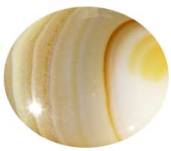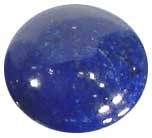|
|
Like many aspects of culture and life, the gem stone can be grouped by type for easier study and organization.
And like many aspects of culture and life, there are many who tried to group a gem stone by type.
This is because the objects that we call gem stones are comprised of a varied list of substances.

Diamond and turquoise do not resemble each other, yet both are considered a gem stone.
The Japanese pearl and the Sri Lankan moonstone may resemble each other, but the pearl is not always considered a gem stone.
So, what are the types of gem stones and how do they relate to each other?
There are several main types of gem stones, and any gem may belong to more than one gem stone type.
Gem Stone Type - Crystalline vs Amorphous:
This is one of the most common distinctions in gem stones. A gem stone of the crystalline type, such as a diamond or a ruby, is made up of a single crystal.
This crystal can be a single element, like the carbon of the diamond, or a chemical compound, like the aluminum oxide of the ruby.
A gem of the amorphous type, like turquoise, is made up of a hardened mixture of other substances. While individual components of this mixture can be crystalline, the gem stone itself is not a single crystal.
Gem Stone Type – Organic vs Inorganic:
Most gem stones are made from non living materials and are called inorganic gems such as aluminum Oxide (ruby, sapphire), beryl (emerald) and quartz (amethyst).
Organic gems are a group of gem stones whose creation is associated with living organisms which are formed from once living material changed over time into a stone.
Amber, a typically clear, yellowish stone, is formed from tree resin fossilized over years.
Jet, a form of coal, is a mineral made from decayed plant material under extreme pressure.
Other organic materials such as pearl, ivory, and coral, are considered by some to be gem stones.
Others feel that to be a true gem, the stone must be formed by gradual processes over long periods of time.
They feel that since pearls and ivory are formed in few years they disqualified them from the gem stone category.
But they are still pretty!
Gem Stone Type - Mineral vs Rock:
Like the previous grouping, this gem stone type is determined by the content of the stone.

A mineral gem stone is a single, naturally occurring compound formed through various geological processes.
Diamonds and rubies also fall into this category, as does jade which, while a crystalline mineral, is not composed of a single crystal.
A rock is a cohesive mixture of minerals. An example of this gem stone type is the Lapis Lazuli, one of the first stones to be considered a gem.
Gem Stone Type – Miscellaneous:
Take your pick.
Blue vs. red. Hard vs. soft. Smooth vs. rough. Opaque vs. clear. All are valid comparisons.The most valid of all, perhaps is the preference type.
That is, the type I like vs. the type I don't like.
After all, it's how we perceive the stone that matters.